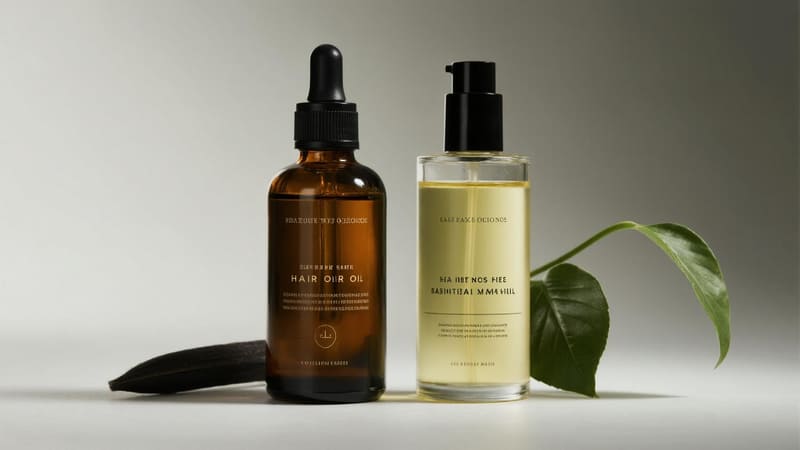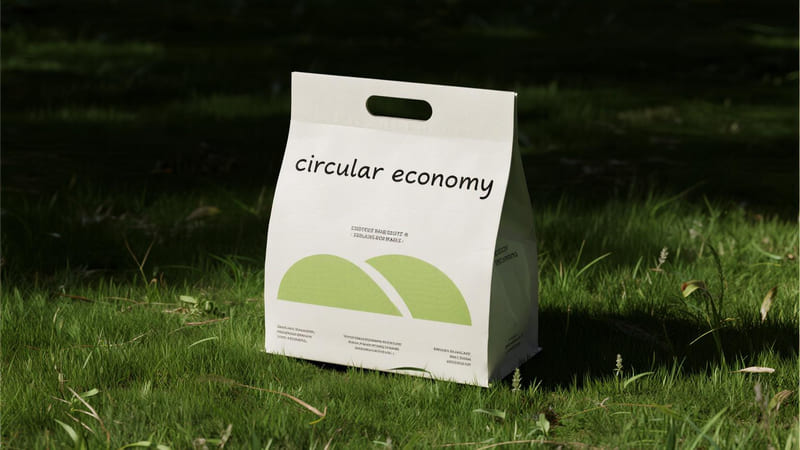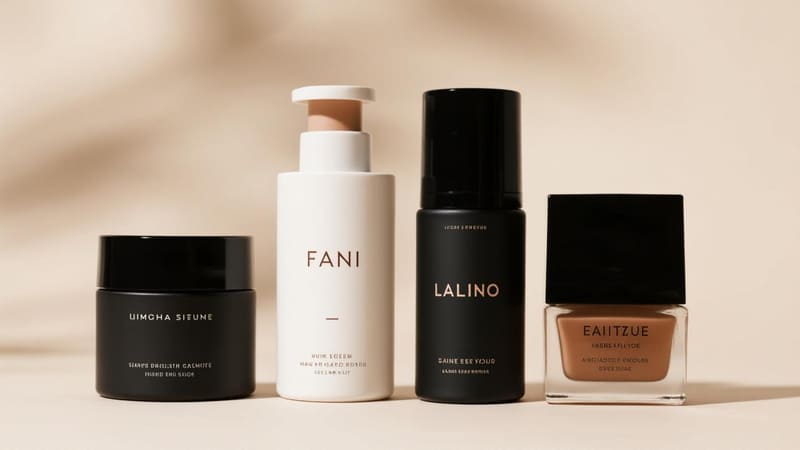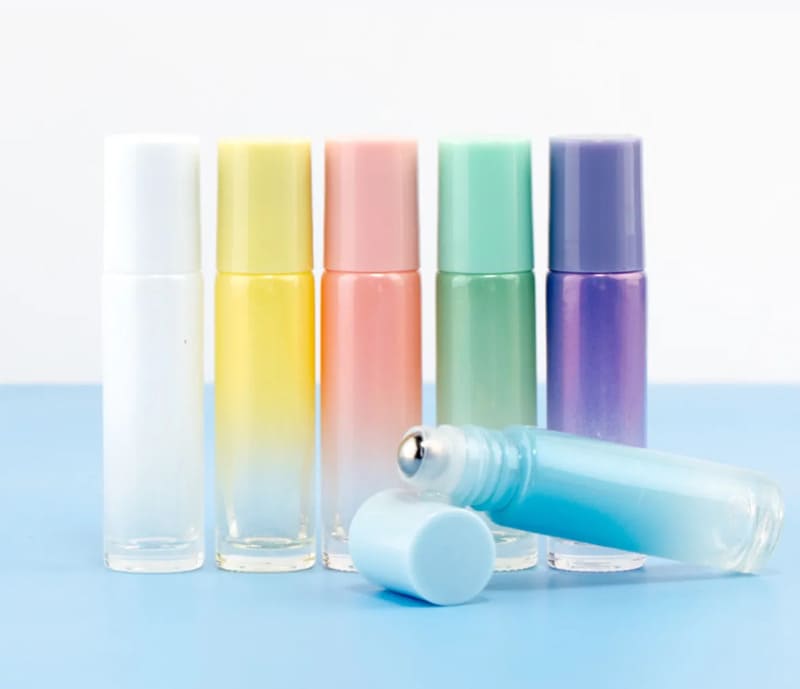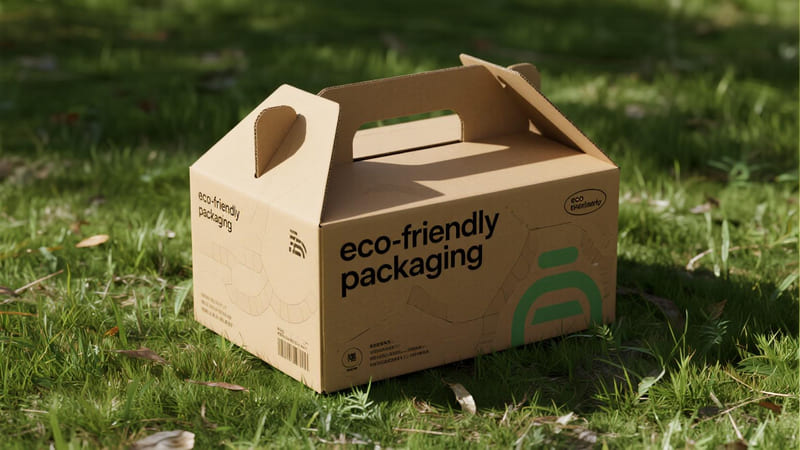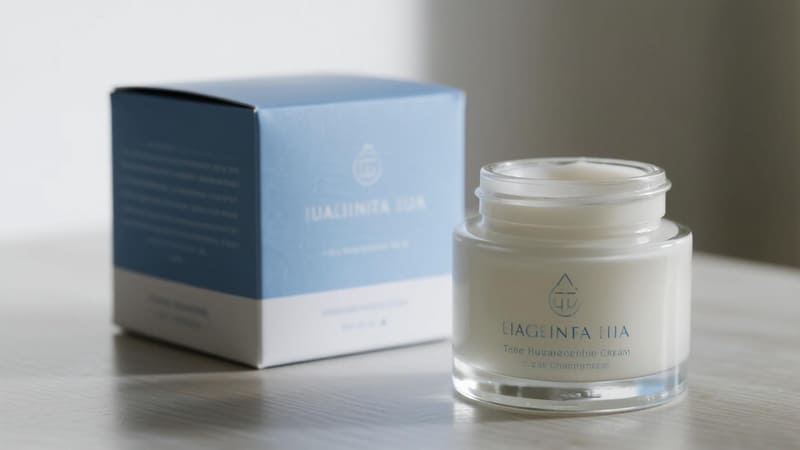When it comes to storing hair oil, the choice of bottle is more than just an aesthetic decision; it can significantly impact the quality, potency, and shelf life of the product. Both glass and plastic have their pros and cons, but for preserving the integrity of high-quality hair oils, one material generally holds the edge.
For optimal preservation, you should store hair oil, especially natural or preservative-free formulas with active ingredients, in a glass bottle. Glass is chemically inert, preventing any interaction with the oil, and dark-colored glass offers superior protection from UV light degradation. While plastic offers durability and is lighter, glass is the superior choice for maintaining the oil’s purity and potency over time.
As a packaging manufacturer with ShineTop for over two decades, we’ve worked with countless beauty brands, and the choice between glass and plastic is a key strategic decision. Let’s break down why glass is often the preferred option for high-quality hair oils.
Why is Glass a Better Choice for Storing Hair Oil?
High-quality hair oils are often complex blends of natural carrier oils, potent essential oils, and other active botanical extracts. These delicate ingredients need a stable environment to remain effective.
Glass is a better choice for storing hair oil because it is non-reactive (inert), impermeable to oxygen, and can provide UV protection when colored. This prevents the oil from becoming contaminated by leached chemicals, protects it from oxidation which can cause rancidity, and shields light-sensitive ingredients from degradation, thus preserving the oil’s quality and extending its shelf life.
Key Advantages of Glass for Hair Oil:
-
Chemical Inertness (Purity):
- Glass will not react with the oils, no matter how delicate or potent they are. This means the oil’s chemical structure remains stable and pure.
- There is no risk of chemicals from the packaging (like plasticizers or BPA) leaching into the hair oil and potentially onto your scalp and hair.
-
Protection from Oxidation (Freshness):
- Glass provides an excellent barrier against oxygen. Many natural oils are prone to oxidation, which is a chemical reaction with oxygen that causes them to go rancid. Rancid oils lose their beneficial properties and develop an unpleasant smell. A well-sealed glass bottle minimizes this risk.
-
UV Light Protection (Potency):
- Many botanical oils and essential oils are sensitive to degradation from UV light.
- Dark-colored glass, such as amber or cobalt blue, is highly effective at filtering out damaging UV rays, protecting the potency of the active ingredients in the hair oil. This is a crucial feature that most standard plastics do not offer.
-
Premium Perception:
- Glass has a significant weight and a high-end feel that consumers associate with quality and luxury. For a premium hair oil, a glass bottle enhances the perceived value of the product. My client Anna from Thailand uses our amber glass dropper bottles for her natural hair and face oils for exactly this reason.
When is it Okay to Use a Plastic Bottle for Hair Oil?
While glass is superior for preservation, plastic bottles are widely used for many hair oils, especially in the mass market. There are specific reasons and situations where plastic can be an acceptable or even practical choice.
It is okay to use a plastic bottle for hair oil if the oil is a more stable, refined formula (like mineral oil-based or silicone-based serums), if the plastic is a high-quality, compatible type (like PET or HDPE), and if durability and light weight are the primary concerns (e.g., for travel or use in the shower).
Considerations for Using Plastic:
-
Product Formulation:
- Silicone-Based Serums: Many popular "hair oils" are actually silicone-based serums (look for ingredients like dimethicone). These are very stable and less prone to oxidation, making them perfectly suitable for plastic packaging.
- Refined Mineral Oil: Products based on mineral oil are also highly stable and can be safely stored in plastic.
- Formulas with Strong Preservatives: Hair oils with robust antioxidant and preservative systems are less vulnerable to degradation and can be packaged in plastic.
-
Type of Plastic:
- PET (Polyethylene Terephthalate): A good choice as it has better barrier properties than some other plastics and good chemical resistance. It can also be made in darker, UV-protective colors.
- HDPE (High-Density Polyethylene): Opaque and durable, offering good protection from light and a good moisture barrier.
- PCR (Post-Consumer Recycled) versions of these plastics are a more sustainable choice.
-
Safety and Convenience:
- Shatterproof: Plastic is much safer for use in a slippery environment like a bathroom or shower, where dropping a glass bottle could be dangerous.
- Lightweight: Makes the product lighter for shipping (reducing carbon footprint) and more convenient for travel.
- Squeezability: Flexible plastic tubes or bottles can be a convenient way to dispense thicker hair oils or masks.
-
Cost:
- Plastic packaging is generally more cost-effective to produce and transport than glass, making it the standard for mass-market products.
Glass vs. Plastic for Hair Oil: A Direct Comparison
To make the best choice, it’s helpful to see a direct comparison of the key attributes of each material as it relates to storing hair oil.
| Feature | Glass | Plastic | The Verdict for Hair Oil |
|---|---|---|---|
| Purity & Preservation | Excellent. Inert, non-leaching, superior oxygen barrier. | Good to Fair. Potential for leaching/interaction with some oils. | Glass is the clear winner for preserving pure, natural, or sensitive hair oil formulas. |
| UV Protection | Excellent (if dark colored). Amber/cobalt glass is highly effective. | Fair to Poor. Requires special opaque coloring or UV additives. | Dark glass is the superior and more reliable option for protecting light-sensitive oils. |
| Durability | Fair. Breakable, can be a safety hazard in wet environments. | Excellent. Shatter-resistant and durable. | Plastic is the safer and more durable choice for in-shower or travel use. |
| Weight & Portability | Heavy. Less convenient for travel, higher shipping costs. | Lightweight. Excellent for travel and e-commerce. | Plastic is far more practical for portability and efficient shipping. |
| Premium Feel | High. Weighty, cool to the touch, conveys luxury. | Variable. Can be well-designed, but generally perceived as less premium. | Glass provides a more luxurious and high-end consumer experience. |
| Sustainability | Excellent Recyclability. Infinitely recyclable in a closed loop. | Good Recyclability (for PET/HDPE). PCR options are a major plus. | Both have strong sustainability arguments. Glass has better circularity. PCR plastic reduces virgin resource use and is lighter to ship. |
| Cost | Higher. | Generally Lower. | Plastic is the more cost-effective option, especially for mass-market brands. |
How to Choose the Right Bottle for Your Hair Oil?
As a brand owner or a DIY enthusiast, here’s a simple decision guide to help you choose the right bottle.
To choose the right bottle for your hair oil, first analyze your formula: if it’s based on pure, natural, or essential oils, choose a dark glass bottle. If it’s a stable, silicone-based serum, a quality plastic bottle (like PET) is suitable. Then, consider your brand positioning (luxury vs. mass-market) and the primary use case (at-home vanity vs. in-shower/travel).
Ask Yourself These Questions:
-
What is my hair oil made of?
- Pure, natural, cold-pressed oils with essential oils? -> Dark Glass is strongly recommended to protect your investment and ensure efficacy.
- Silicone-based, mineral oil-based, or a highly refined formula with strong preservatives? -> Plastic (PET, HDPE) is a safe and practical option.
-
What is my brand’s identity?
- Luxury, high-end, organic, or therapeutic? -> Glass will best communicate this quality and value.
- Accessible, convenient, family-friendly, or mass-market? -> Plastic aligns better with this positioning.
-
Where will my customer primarily use this product?
- On a vanity or dressing table? -> Glass is elegant and safe in this environment.
- In the shower, gym bag, or for travel? -> Plastic is the safer, more durable, and lighter choice.
-
What is my budget?
- Premium budget allowing for higher packaging costs? -> Glass is a great option.
- Need to be cost-effective for a competitive price point? -> Plastic is the more economical choice.
-
What are my sustainability goals?
- Focus on ultimate recyclability and purity? -> Glass.
- Focus on reducing shipping weight/emissions and using recycled content? -> PCR Plastic.
My client Mohammed from Iraq, who creates luxury gift sets, would always choose a beautifully designed glass bottle for a hair oil to be included in his collections, as the premium perception is paramount. The choice of packaging is a direct reflection of the product’s intended quality.
Conclusion
The choice between storing hair oil in a glass or plastic bottle is a crucial one that hinges on the nature of the oil and the goals of the brand. For preserving the purity and potency of natural, sensitive, or high-end hair oils, a dark glass bottle is the unequivocally superior choice. It offers unmatched protection from chemical interaction, oxidation, and light degradation. However, for more stable, silicone-based formulas or when durability, safety in wet environments, and cost-effectiveness are the top priorities, a high-quality plastic bottle is a perfectly suitable and practical option. Ultimately, the bottle should be a thoughtful extension of the product it holds, safeguarding its quality and communicating its value to the consumer.

